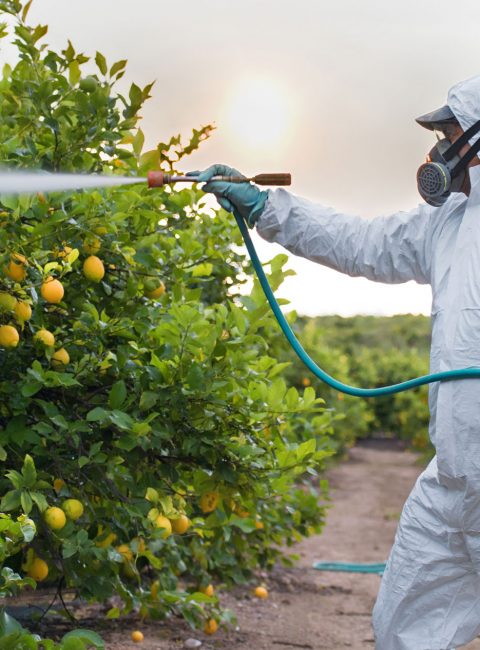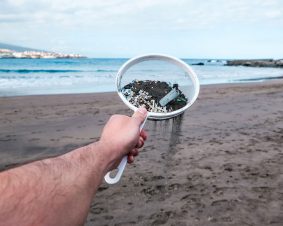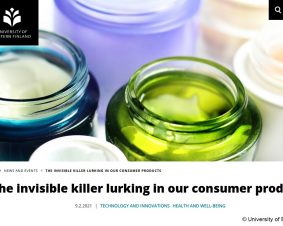 >
Spotlight October 2021: Nanopesticides – a proposal for a risk assessment framework
>
Spotlight October 2021: Nanopesticides – a proposal for a risk assessment framework
The application of so-called “nanopesticides” (see also cross-sectional text Nanomaterials in plant protection products) is said to have two basic advantages: a smaller amount of pesticide is needed for the same agricultural area and the efficacy is improved. This is necessary to grow enough food for a still growing world population. However, this could also entail increased risks for humans and the environment if, for example, these substances could be absorbed significantly better by crops, thus increasing their concentration in food, and/or that they could be absorbed better by humans or livestock, thus contributing to increased body burden.
To this end, an international group of scientists has considered and established a tiered approach to assess the risks to human health (Kah et al., 2021). Taking into account existing guidance documents and regulations (e.g., OECD guidelines), a strategy was developed on how a sustainable use of new nanopesticides could be enabled while considering safety-related issues. Two general principles were distinguished: first, the possibility of using nanoscale packages to deliver the active ingredients (so-called “nanocarriers”), and second, nanometer-sized active agent, such as metals or metal oxides that deliver active ions (e.g., silver or copper), with the nanoparticles usually delivered by protective sheaths made of polymers. For both variants, the critical steps for potential human exposure were identified (active ingredient preparation, field application, and postharvest exposure through food ingestion) and ways to investigate possible toxic effects that may be triggered.
The model shown here consists of 6 steps necessary to holistically describe nanopesticides and their health effects. In addition, the group further highlights important knowledge gaps that should be addressed in the near future.
Original publication:
Kah, M., Johnston, L.J., Kookana, R.S., Bruce, W., Haase, A., Ritz, V., Dinglasan, J., Doak, S., Garelick, H., and Gubala, V. (2021). Comprehensive framework for human health risk assessment of nanopesticides. Nat Nanotechnol 16, 955-964

Weitere Spotlights
Spotlight August 2022: Three-stage model for the formation of micro- and nanoplastic particles.
Plastic pollution is a global problem that will continue to affect humanity for more than 100 years. There is the visible pollution, e.g. plastic debris in the environment, which leads to death for many animals (because they mistakenly think the plastic is food and eat it or because they get caught in the plastic waste). […]
Read moreSpotlight March 2022: Safe Materials from Scratch – Safe-by-Design-Concept in action
In recent decades, German research on nanomaterials and new, innovative materials has been widely expanded by material safety aspects. European initiatives also pay significant attention to this: both the European Union (EU) Green Deal, and the Chemicals Strategy for Sustainability (CSS) aim to create a sustainable, climate-neutral economy with sustainable and safe chemicals and products, […]
Read moreSpotlight June 2023: New catalytic process for recovering important materials from composites in a single process
Previously virtually impossible and a huge problem: fibre-reinforced resin composites (epoxides) were not recyclable, and wind turbine rotor blades, for example, add up to a waste pile of 43 million tons by 2050. Researchers have now taken an important first step in “reprocessing” these composites and catalytically dissolving them so that the carbon fibres and […]
Read moreSpotlight April 2021: Nanomaterials and Fake News – a commentary based on an example
In February 2021, the article “The invisible killer lurking in our consumer products” appeared, describing nanoparticles as a greater danger than Corona [1]. “The use of nanomaterials” would be “unregulated” and “nanomaterials are so small that they cannot be determined once they are part of a product”. So what is the truth of these statements? […]
Read more


